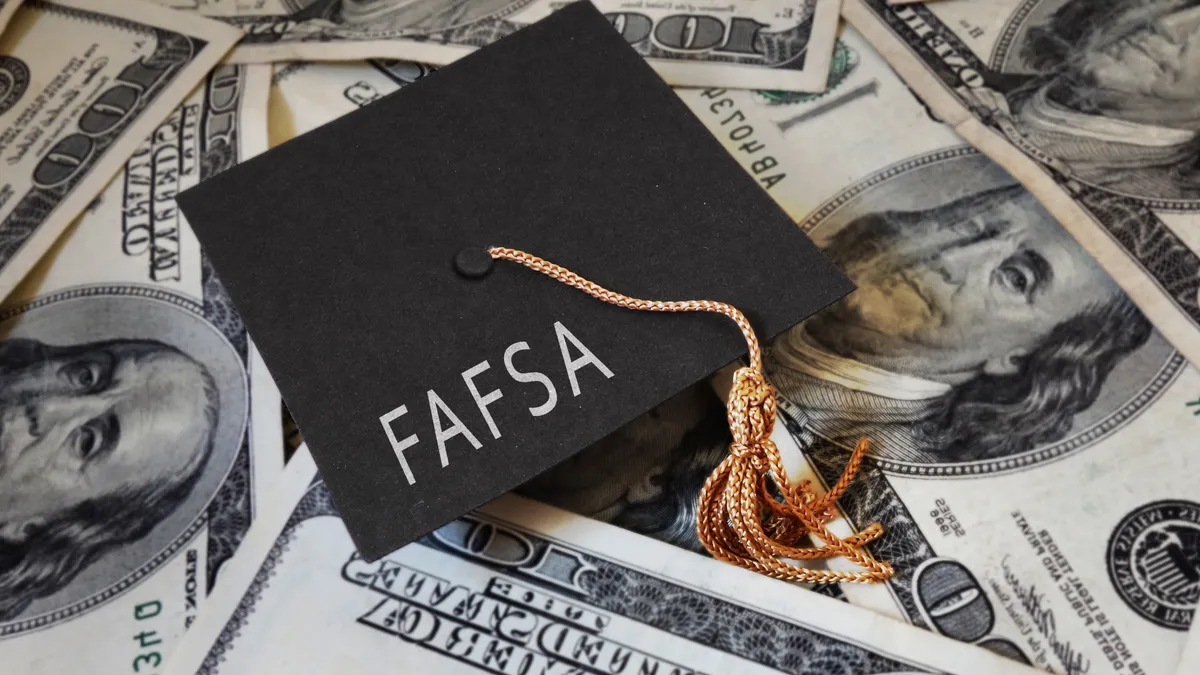Dive Brief:
- The number of high school seniors who completed the Free Application for Federal Student Aid largely stagnated in June, fueling concerns about enrollment declines this fall, according to the latest analysis from the National College Attainment Network.
- As of June 28, some 46% of the high school class of 2024 — about 1.9 million students — had submitted the new FAFSA form. That's down from 53.2% at the same time last year, representing about 250,000 fewer completions.
- NCAN typically compares the most recent FAFSA season to previous cycles at the end of June. But tracking this season's progress well into the summer will be important given how challenging the form proved to be, according to Bill DeBaun, senior director of data and strategic initiatives at NCAN.
Dive Insight:
FAFSA submissions surged from mid-April to mid-May, but progress stalled after that point, DeBaun said. That's not uncommon, even in a more typical year.
"FAFSA completion cycles, as they go on, tend to lose energy," he said. He attributed the plateau to high school graduations and the passing of states’ priority deadlines for financial aid.
As of June, FAFSA completions declined in every state year over year, NCAN said. Indiana emerged the least scathed, with a 0.9% drop, while Alabama saw the biggest drop, 18.6%.
DeBaun said increased support services designed to help students finish the FAFSA over the summer could offer significant benefits to each additional applicant. They gain access to federal financial aid and, in some cases, higher education more broadly, he said.
"It can be easy, when staring down very depressing line charts, to lose that perspective," DeBaun said.
Many financial aid administrators — already stricken by burnout and high turnover — are working to encourage more members of the class of 2024 to complete the FAFSA this summer.
The U.S. Department of Education has announced a handful of FAFSA support strategies for colleges, high schools and higher ed groups aimed at boosting completion rates. One $50 million investment has funded over 65 groups to encourage form completion, in part allowing them to hire more advisers and coaches and offer extended hours throughout the summer.
At the same time, college and financial aid experts are gearing up to help the next high school cohort complete the FAFSA this fall.
The Education Department is facing pressure to ensure the upcoming cycle is not plagued by the same mistakes as the last one.
The new FAFSA rolled out for this cycle was intended to ease access to financial aid for students and their families. But the department released the updated form about three months later than usual, after which it continued to be plagued by technical glitches and tax errors.
All of this has left college administrators, along with students and families, in a fix.
"When students do not make an immediate transition from high school graduation to postsecondary matriculation, it is really difficult to get them back into the pipeline later on," DeBaun said.
The American Council on Education, joined by three dozen higher education organizations, called on federal lawmakers in May to safeguard the next FAFSA cycle from similar delays. Republican legislators Monday introduced a bill that would require the Education Department to release the form each year by Oct. 1.
The agency's Federal Student Aid office, which is in charge of administering the FAFSA, has been under particular scrutiny.
U.S. Education Secretary Miguel Cardona announced in May that the FSA will undergo a full-scale review following the tumultuous FAFSA rollout. The office, which also oversees the federal government’s student loan portfolio, is under resourced and understaffed, according to department officials.
FSA’s former chief operating officer, Rich Cordray, stepped down at the end of June, and Cardona said the role's reporting responsibilities would be restructured to increase accountability and transparency.













